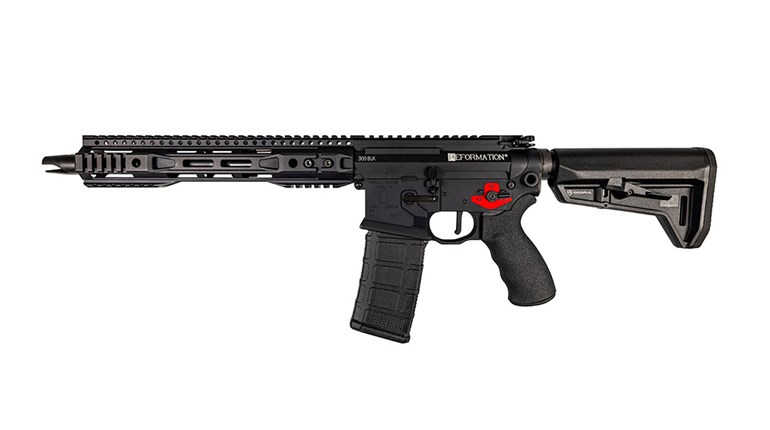
Whereas the annual Golden Bullseye awards acknowledge the finest products available in the shooting sports, the Golden Bullseye Pioneer Award specifically honors outstanding personal achievement. The Pioneer Award spotlights the exemplary achievement and cumulative body of work of an individual, or members of a family, team or partnership, responsible for the development and introduction of shooting equipment that has made a profound, positive and enduring impact on the way Americans shoot and hunt.
A man’s stature in the firearm world can extend beyond the number of guns made by his company, and that’s certainly true of 2019 Golden Bullseye Pioneer honoree George Kellgren. Though his family-owned Cocoa, Fla.-based Kel-Tec CNC, Inc., produces a fair number of guns, virtually everyone who carries a lightweight, compact, recoil-operated .380 ACP or 9 mm pistol can thank Kellgren.
Born in Sweden in 1943, Kellgren attended that nation’s Royal Naval Academy before earning a bachelor’s degree in mathematics. He went to work as a firearm designer for Husqvarna—at that time Sweden’s foremost gunmaker—then was employed by companies in Germany and South Africa before joining Sweden’s Interdynamic AB, followed by Interdynamic of America (Intratec).
In 1990, Kellgren founded Grendel, Inc., in Rockledge, Fla., where he developed a folding stock for a bolt-action rifle, the SRT, as well as a series of pistols, including the interesting, blind-magazine P-10 in .380 ACP. Then came the P-12, combining a polymer frame and a 10-round magazine in just 13 ozs. In 1993, Kellgren launched Kel-Tec CNC Industries as a machine shop to make components for Grendel. The original firm soon closed, but within two years Kel-Tec was making complete guns under its own name.
At the time, the market’s only .32 ACP carry gun was the Seecamp, a somewhat-heavy, all-steel, blowback-operated design. Kellgren put his inventive mind to the task of developing a “proper locked-breech design, using lightweight polymer.” The gun proved a game changer, one that has spawned an entire generation of concealed-carry pistols. It is still made today as the P3-AT. Kellgren followed with a 9 mm version, the P-11, and his designs have been copied by many major manufacturers. “We want to have a gun that most people can afford. I think that’s important,” Kellgren said in a recent interview. “Our guns are usually smaller and lighter than the competition. And have higher magazine capacity.”
Kellgren also designed the SUB-9 semi-automatic folding carbine, which was followed by the SUB-2000, as well as SU-16 and SU-22 folding carbines. More recently, Kellgren and his design team have tackled projects such as the pump-action, double-barreled KSG bullpup shotgun. Interestingly, the .22 WMR PMR 30 and its carbine counterpart, the CMR 30, are refinements of guns Kellgren worked on back in the 1980s. He’s been fascinated by bullpups, developing the semi-automatic RFB as well as the RDB. “In the old days, it was just me doing the whole thing,” said Kellgren. “Now we are five or six,” at Kel-Tec, and, “I still like to do the advanced stuff. I still enjoy inventing firearms.”
Kellgren has lived in the United States since 1979, and is very proud of his U.S. citizenship, as well as his NRA Life membership. He’s also very proud of his work force—all NRA members. Still very active, George Kellgren goes to work daily, extending a distinguished career designing guns.



































